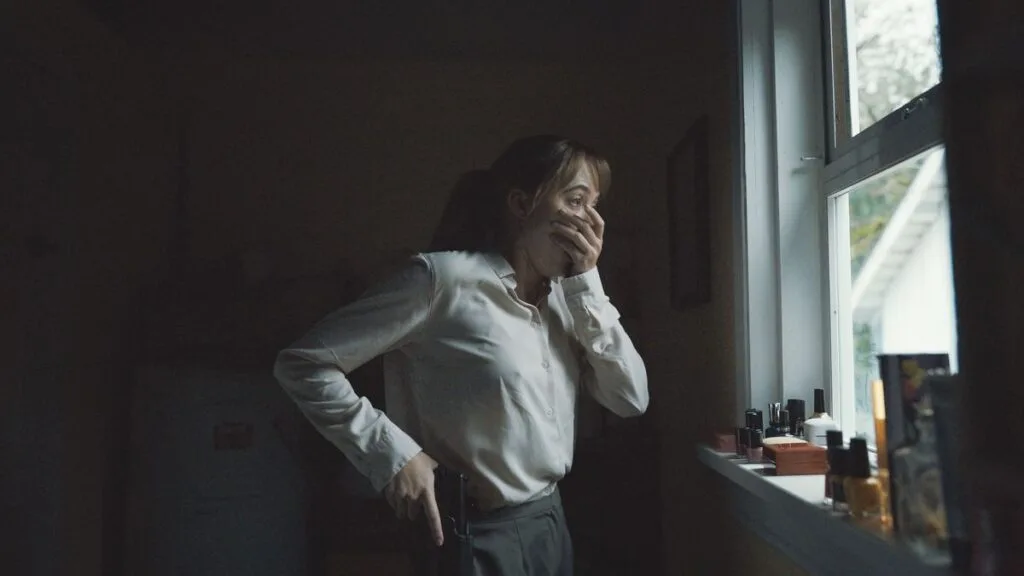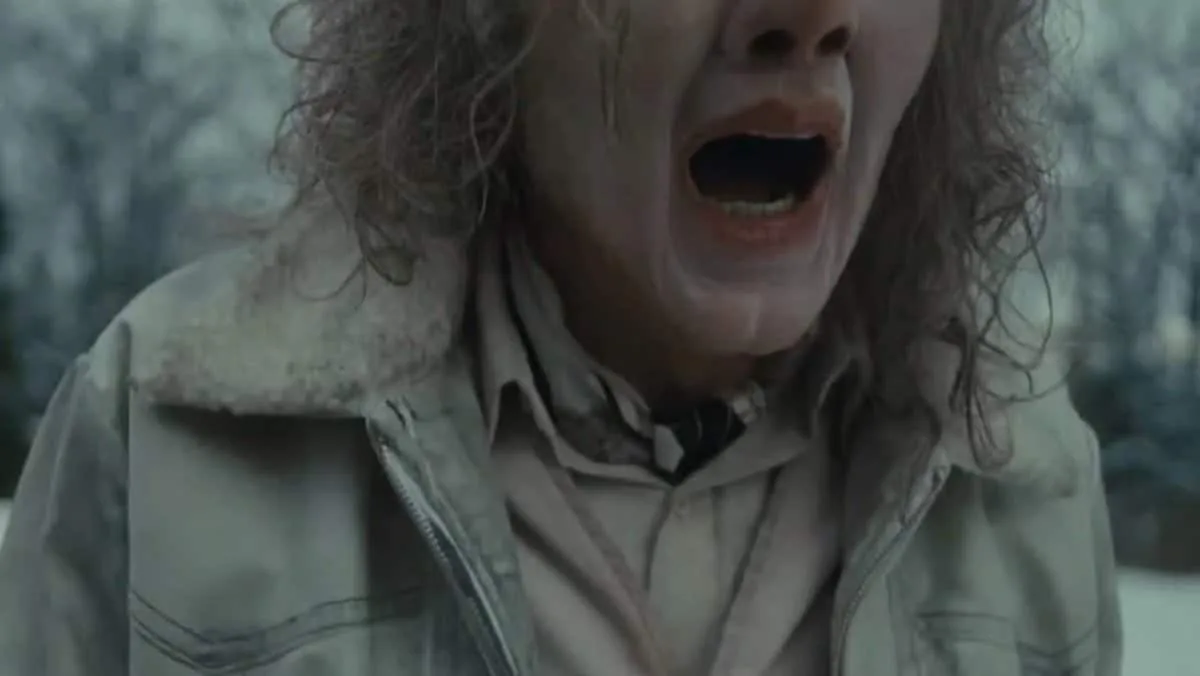
Please note: this review may contain mild spoilers, so if you are hopeful of seeing Longlegs with no prior knowledge – be warned.
Neon has put together an intriguing, long-game promotional campaign for Longlegs (2024) which has been appearing in tantalising parcels for the past few months. For this, they deserve credit: this film will get seen, and it will probably make its money back. When faced with jaded audiences and a crowded market, it’s no mean feat to spread the word quite as far and as wide as this, especially considering it’s an out-and-out horror flick, with no obvious pretensions to be anything else. Longlegs also boasts an appearance (really a cameo) from the master of the OTT strange, Nicolas Cage – albeit buried under a tonne of make-up (though as it stands, he looks like one of the few actors here still in possession of buccal fat). So far, so good – but can these things, these lofty expectations, work against a film in the end?
Consider the above the world’s most hackneyed rhetorical question: of course they can work against a film, if the film ultimately fails to deliver. It’s not all that unusual for a marketing campaign to overpromise – it’s all part of the expected bluster of advertising – but it’s the way it moots a groundbreakingly scary horror that really eats away at Longlegs. In the end, Longlegs is essentially another serial killer movie. And in the end, it feels like a slightly curdled amalgam of a lot of other, better serial killer movies, turning out to be a sequence of diminishing returns which never delivers on the nightmare initially promised. Sure, it’s atmospheric, but in fits and starts: this is TikTok levels of focus and heft, there-and-you’ll-miss-it.
So Longlegs plonks some familiar pieces on the board, even if it then tries to play fast and loose with the gameplay. FBI rookie Lee Harker (Maika Monroe), who has rudimentary psychic abilities, is put on a long-term case, a series of unexplained family mass killings which have been happening for a few decades. Linking these, there’s a sequence of coded letters signed by someone calling themselves ‘Longlegs’. Harker is able to crack the code pretty much instantly: presumably, in twenty years, the finest minds in detective work have failed to do so or else, couldn’t be arsed. In any case, Harker’s uncanny, nervy knack for solving elements of the case make her a perfect choice to try and crack it, once and for all. However, this seems to draw her into the strangeness: visions, hearing voices, possible flashbacks, that sort of thing.
It turns out there’s a supernatural element to all this, and that ‘Longlegs’ himself is only part of what’s been happening. Well, colour us surprised, right? Brace for a very thinly-delineated Satanic element which feels both familiar and yet inferior; then there are dolls, another shorthand attempt at bulking up on the weirdness, but like much within the film it all feels perplexing, and more cynical than successful.
It’s a shame that things peter out in this way, because the film does look good: it’s beautifully and evocatively shot, with some wonderful moments providing lots of invitations to worry about what may be about to creep into view. Cage, whilst deliberately underused in a kind of ‘less is more’ approach, manages a few of his characteristically erratic, unpredictable scenes which are still worth the wait. But a film is not a painting, and even with the film’s occasional approach to storytelling (with the plot clustering around ideas, rather than a sequential narrative) atmosphere alone will not sustain it. A paucity of characterisation and backstory, with a script more given to quirky, low frequency Americana and anti-maternal blather rather than telling us anything – even things which might scare us – renders Longlegs a patchwork of piecemeal squares, rarely scary and barely sequential. Any dread soon dissipates, and a montage of non-sequiturs takes its place.
Directed by Oz Perkins and not – as this reviewer wondered for a moment – David Robert Mitchell, it’s odd, therefore, to note that Longlegs winds up having some similarities to It Follows, the film which kickstarted Maika Monroe’s career a decade ago. A horror which centres a young woman, and the supernatural buck-passing which saves her skin; an approach to time periods which both suggests a specific time period (e.g. Bill Clinton’s presidential portrait hanging on the wall) but then ignores other period detail, blending perhaps deliberately into a rootless, timeless and disorientating timeline. It all feels oddly familiar, in some quite specific ways.
However, perhaps the most obvious point of comparison for me is also the thing which finally sounds the death knell for Longlegs. It feels for all the world like someone has tried to blend a serial killer horror with Twin Peaks, and/or Lynch’s films: take that Lynch strangeness, layer it with Satanism, and Bob’s your uncle? Surely, a winning formula? Well, Bob provides wardrobe cues for Cage’s character, definitely, but there are so many other moments which feel like they’ve been basically purloined from Lynch; Lynch fans may like to count them. All this has achieved though, in the end, is to underline how hard it is to really blend fever-dream strangeness with engaging storytelling. Lynch can do it; Longlegs, on the other hand, cannot.
